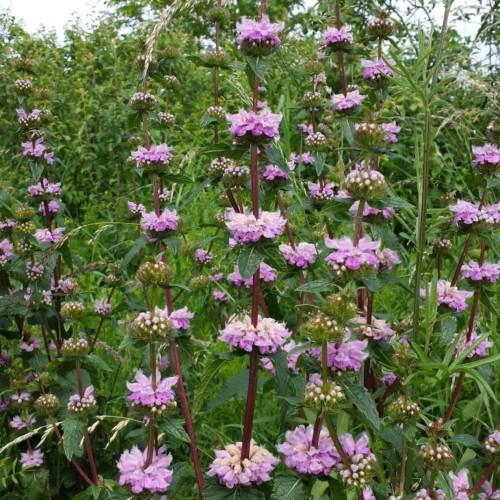
phlomis
Phlomis tuberosa 'Amazone'
Cycle:
Herbaceous Perennial
Watering:
Average
Hardiness Zone:
6 - 9
Flowers:
Flowers
Sun:
Full sun
Leaf:
Yes
Growth Rate:
Low
Maintenance:
Moderate
Drought Tolerant:
Yes
Salt Tolerant:
Yes
Care Level:
Medium
watering
Phlomis (Phlomis tuberosa 'Amazone') prefer a moist but well-drained soil and should be watered every 3-5 days in the summer and once a week in the winter. It's important to check the soil moisture before you water, as too much water can cause rot. Always water until you can see water effervescing at the bottom of the pot and avoid overwatering which can lead to root rot. Make sure to water around the base of the plant, avoiding the foliage if possible. Allow the top 2" of soil to dry between watering. If the weather is especially hot, feel free to give an extra thorough watering but make sure the excess water can drain away.
sunlight
Phlomis (Phlomis tuberosa 'Amazone') is a plant that requires 6 to 8 hours of direct sunlight per day. It is most successful when grown in sunny or partially shaded areas with southern or western exposures. During the morning and late afternoon hours, direct light is ideal for the plant. Placing it in a location where it can receive direct sun in the midday heat is not recommended, as it is too intense and can cause the leaves to scorch. Partial shade is also recommended throughout the hottest parts of the day, to avoid sun damage.
pruning
Phlomis (Phlomis tuberosa 'Amazone') is a fast-growing, perennial shrub that blooms in late spring and summer with brightly colored yellow flowers. Pruning should be done on this plant species in early spring. The plant should be cut back to approximately 1-third of its height to encourage new growth and stems, and it will also help maintain the natural shape of the plant. Cut back any dead, diseased, or damaged stems and branches and remove any shoots growing out of the center of the plant. To keep the plant looking neat and tidy, any flower heads and spent blooms should be trimmed off as needed, and any straggly or overgrown stems should be removed. This will encourage the plant to remain dense and bushy. If pruning is done too late in the season, it can inhibit new growth, so it is best to prune Phlomis in early spring for optimal health and growth.
